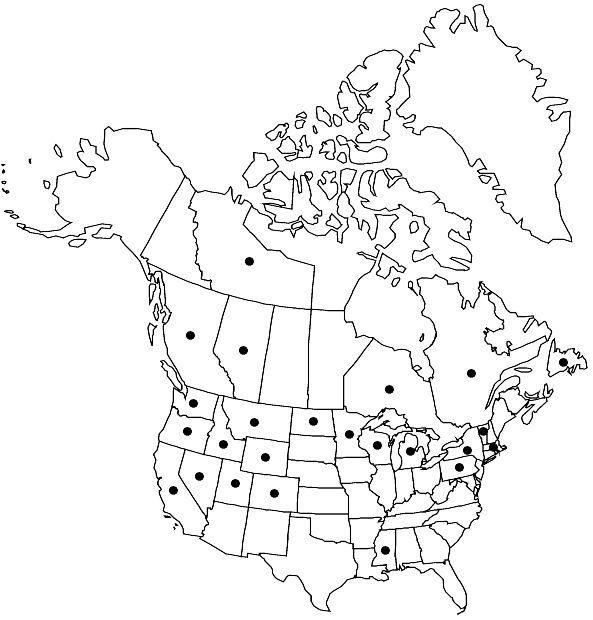Difference between revisions of "Schistidium dupretii"
Phytologia 33: 106. 1976,.
FNA>Volume Importer |
imported>Volume Importer |
||
| (One intermediate revision by the same user not shown) | |||
| Line 51: | Line 51: | ||
|publication year= | |publication year= | ||
|special status= | |special status= | ||
| − | |source xml=https:// | + | |source xml=https://bitbucket.org/aafc-mbb/fna-data-curation/src/2e0870ddd59836b60bcf96646a41e87ea5a5943a/coarse_grained_fna_xml/V27/V27_291.xml |
|subfamily=Grimmiaceae subfam. Grimmioideae | |subfamily=Grimmiaceae subfam. Grimmioideae | ||
|genus=Schistidium | |genus=Schistidium | ||
Latest revision as of 21:25, 5 November 2020
Plants in open, occasionally compact, often flattish tufts or cushions, brownish-olivaceous, brown, occasionally olivaceous. Stems 0.5–2 cm, central strand distinct. Leaves erect, occasionally curved, imbricate when dry, ovate-lanceolate, rarely ovate-triangular, keeled, 1–1.6(–2) mm, 1-stratose, sometimes 2-stratose in striae distally; margins usually recurved to near apex, sometimes unequally, rarely plane, smooth, 2-stratose, rarely 3-stratose; apices acute or sub-obtuse; costa percurrent or excurrent as a short, usually denticulate awn, smooth; basal marginal cells oblate, occasionally quadrate, trigonous; distal cells short-rectangular, rounded (ovate), or quadrate, 7–9(–11) µm wide, smooth, straight or slightly sinuose. Sexual condition autoicous. Capsule dark red-brown, rarely lighter or yellowish, short-cylindric, 0.7–1.3 mm, usually finely striate when empty; exothecial cells isodiametric or short-elongate, often irregularly angular, thin-walled, weakly trigonous; stomata present; peristome patent to squarrose, 250–380 µm, red or reddish brown, densely papillose, entire or weakly perforated. Spores 8–11(–13) µm, smooth.
Phenology: Capsules mature late spring to early summer.
Habitat: Exposed to semi-shaded rock in dry habitats
Elevation: moderate to high elevations (200-3300 m)
Distribution

Alta., B.C., Nfld. and Labr. (Nfld.), N.W.T., Ont., Que., Calif., Colo., Idaho, Mass., Mich., Minn., Miss., Mont., Nev., N.Y., N.Dak., Oreg., Pa., Utah, Vt., Wash., Wis., Wyo., Eurasia.
Discussion
The usually open, often flattish cushions or tufts, imbricate leaves, and brownish coloration are distinguishing characters of Schistidium dupretii. It is easily confused with some populations of S. confertum (see comments thereunder) and S. frigidum, both of which can form similarly colored low tufts or cushions. The rectangular proximal marginal cells and the absence of elongate exothecial cells in S. frigidum separate it.
Selected References
None.